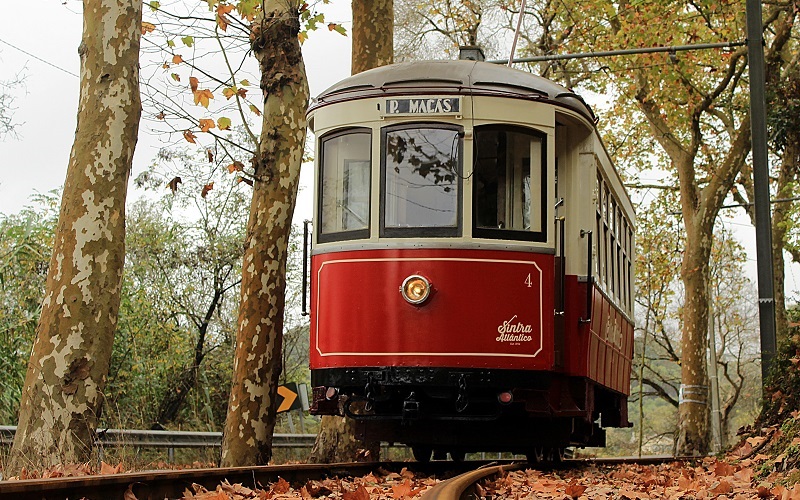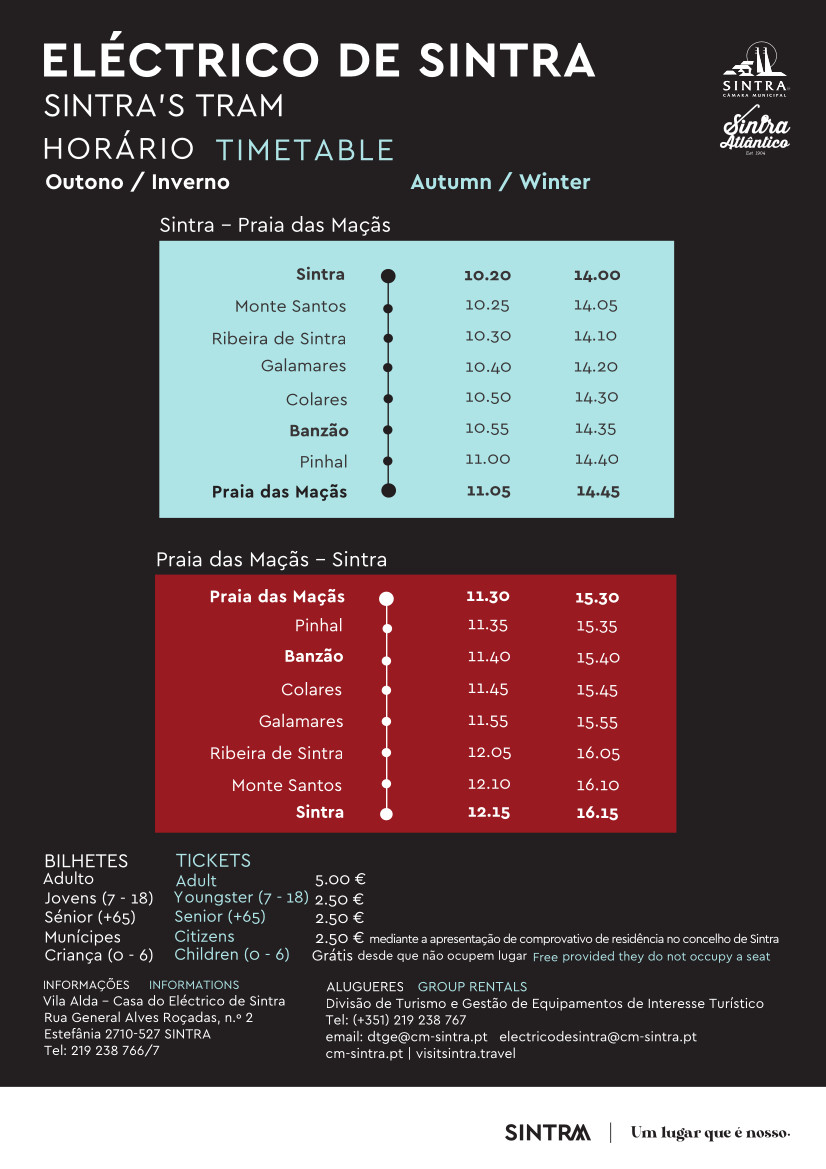
The railway line connects the mountains to the sea through the town to Maçãs Beach, a stretch of almost 11 kilometres, between Vila Alda in Estefânia and Maçãs Beach. During the 45 minutes trip, approximately, passengers can enjoy a unique sightseeing tour between the Sintra Mountains and the Atlantic Ocean.
History
The idea of connecting Sintra to Colares and later to Maçãs Beach came in 1886. For several years, successive attempts were made to implement this project, yet one by one, they all failed.
Only in November 1898 was a giant step taken, when the Sintra City Council granted Nunes de Carvalho and Emídio Pinheiro Borges, for a period of 99 years, the concession to build and operate a steam railway between Sintra and the Maçãs Beach, later replaced by electric traction.
In July of 1900, the Companhia do Caminho de Ferro de Cintra à Praia das Maçãs was established and, in 1904, it came to be called Companhia Cintra ao Oceano.
In August 1902, in the area of Estefânia, the construction of this line began and in March 1903, the American firm, J. G. Brill Company received a commission for 13 electric engines, seven motor cars and six trailers.
On 31 March, 1904, the first stretch is opened, between Sintra (Vila Velha) and São Sebastião de Colares, with an extension of 8 900 meters and, on 10 July 1905, the stretch opens to Maçãs Beach, a length of 3 785 meters.
From the beginning, the life of trams has always been a busy one. In 1914, the Sintra-Atlântico Company was formed, which replaced the previous company that had gone bankrupt.
On 31 January, 1930 the trams arrive at the picturesque village of Azenhas do Mar, reaching its maximum length of 14 600 meters. Sintra trams had entered their best period, driven by the director’s dynamism, Camilo Farinhas, who drove the Sintra-Atlântico until the year of his death, in 1946.
The decay came during the last years of the 1940s, with the development of mechanical transport. From 1953 onwards, trams started operating only during the summer and, in 1955, the stretch from Maçãs Beach to Azenhas do Mar was closed. In 1958 the same happens with the stretch between Vila Velha and Sintra Station, due to the widening of Volta do Duche and the increase in car traffic in this area of Sintra.
Only operating in the summer seasons between Sintra (Station) and Maçãs Beach, the trams will acquire a very special status, becoming a true famous landmark of Sintra, experiencing a new golden period. On Sundays and bank holidays, a sea of people was often seen trying and find a seat on the trams. There were no trams to carry so many people.
In August 1967, Sintra-Atlântico is bought by the trucking group Eduardo Jorge. Under new management, the investment in electric power is reduced to a minimum of its survival, waiting for the end of its concession because the exploitation had no longer been profitable. The degradation of infrastructures and tracks becomes visible, due to the divestment by the concessionaire company.
This uninspiring panorama lasts until 1974, when trams operate for the last time to Sintra. On July 1975, the replacement of trams by buses is authorized.
Despite all the hardships, the desire to put the trams back on the rails was not over and on 15 May, 1980, the circulation of trams on this line was officially restarted, but only between Banzão and the beach.
Between 1996/97 the stretch between Ribeira and Maçãs Beach was recovered and on 30 October, 1997, Ribeira saw the arrival of the trams again. On 4 June, 2004, precisely in the year of its centenary, the trams reach Sintra once again, more precisely until the area of Estefânia.
This “rail heritage” is back in operation and, many years later, it is with great joy that the trams were once again full of passengers.






